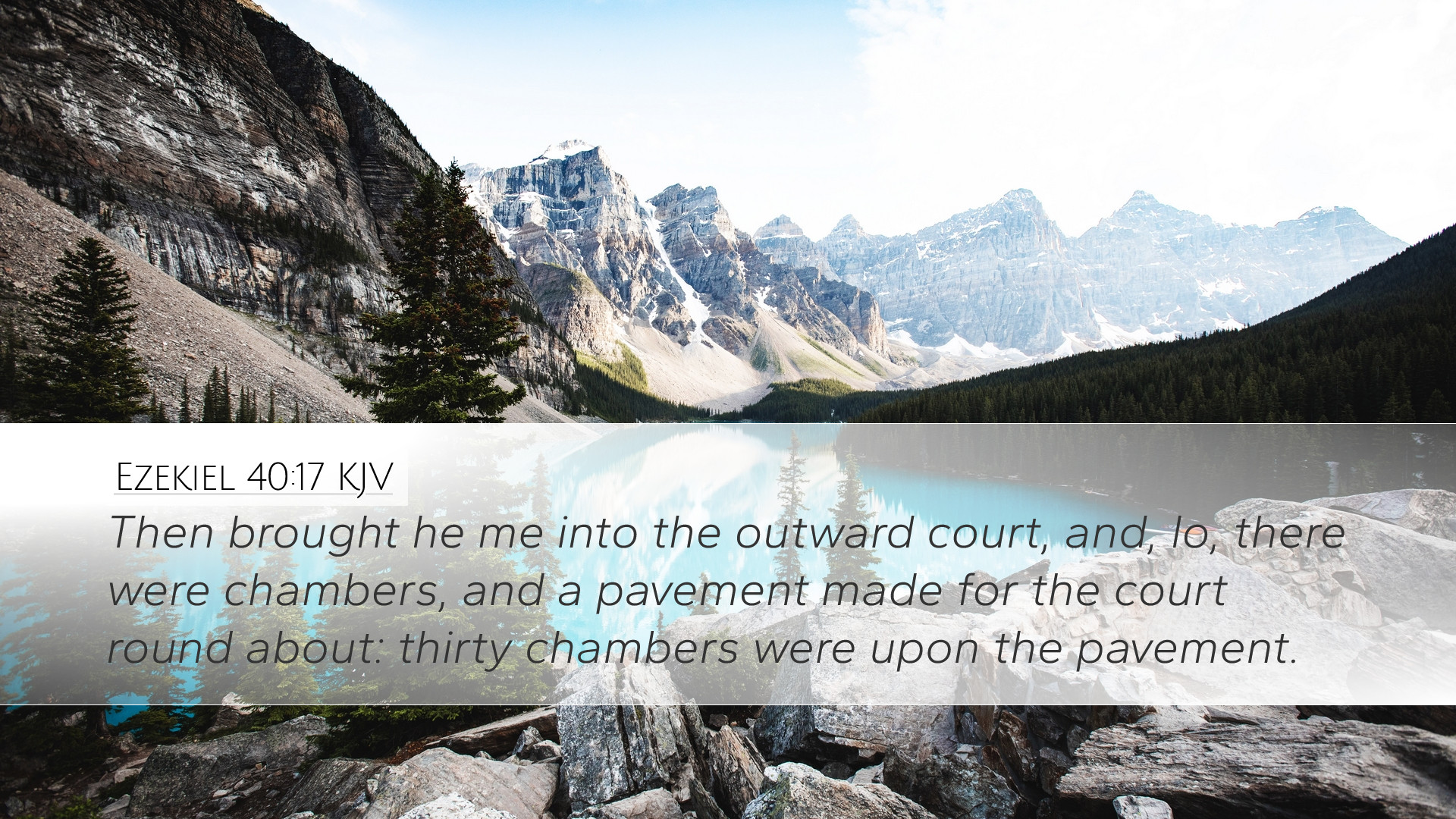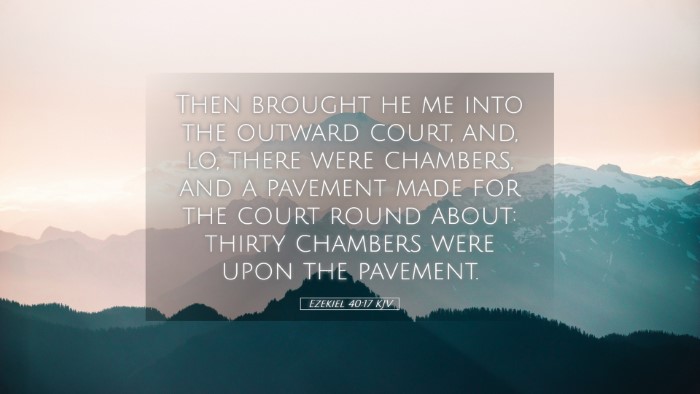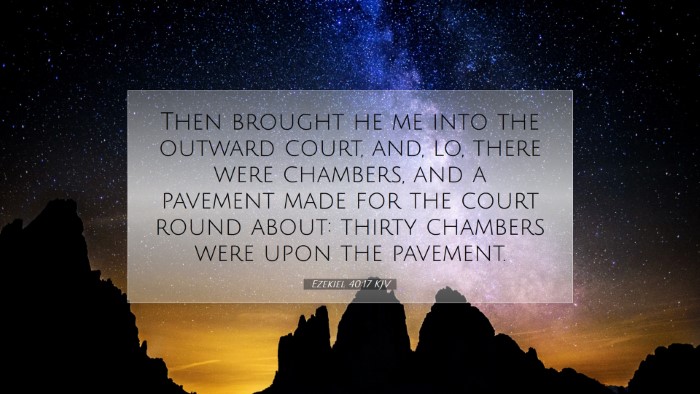Ezekiel 40:17 Commentary
Bible Verse: "Then brought he me to the outward court; and, lo, there were chambers, and a pavement made for the court round about: thirty chambers were upon the pavement."
Introduction
The verse from Ezekiel 40:17 serves as a beginning point for a detailed vision that God reveals to the prophet Ezekiel concerning the future temple and the worship that will take place there. This passage is part of a larger vision that presents profound theological and eschatological implications. By reflecting on the insights provided by esteemed commentators such as Matthew Henry, Albert Barnes, and Adam Clarke, we can derive deeper meanings that resonate with contemporary believers.
Contextual Analysis
The context of Ezekiel's vision is critical for understanding its significance. After a period of exile, Ezekiel’s vision of a new temple represents hope and restoration for the people of Israel. The outward court mentioned here symbolizes a place of separation and preparation, standing as a precursor to the holy places of worship.
Significance of the Outward Court
According to Matthew Henry, the outward court signifies the area designated for the people, where they might engage in holy activities without entering into the deeper, more sacred spaces reserved for the priests. This distinction emphasizes the importance of holiness and the respect required in approaching God.
Albert Barnes highlights that this area, adorned with chambers and a pavement, serves both functional and aesthetic purposes. These chambers likely represented places for various activities, possibly related to sacrifices or preparations for worship, further indicating the community's involvement in the divine service.
Chambers and Their Function
The mention of thirty chambers upon the pavement points towards a structured layout within the worship space. Each chamber could signify a particular role or function, reflecting God’s order in worship.
Practical Uses of the Chambers
- Provision for Priesthood: Adam Clarke notes that these chambers were utilized by the priests and Levites for various needs associated with their holy service.
- Storage Space: The chambers potentially served as storage locations for sacred vessels and offerings, facilitating the smooth operation of worship practices.
- Meeting Places: They might also have functioned as places for spiritual discussions or instruction, encouraging the growth of faith within the community.
The Pavement's Symbolism
The ‘pavement made for the court’ holds symbolic significance as well. The smooth, prepared surface can represent the paths prepared by the Lord for the worshipers, a metaphor for the divine invitation to holiness.
Reflective Insights
- Preparation for Holiness: Matthew Henry emphasizes that before entering sacred space, one must be prepared and cleansed, symbolized by this well-defined pavement.
- Unity and Community: The layout suggests an intentional design meant to promote unity among worshipers, indicating that worship is not an isolated act but a communal one.
Theological Implications
This passage in Ezekiel not only provides architectural details but also profoundly reflects on God's relationship with His people and their appropriate response in worship. The physical structure of the temple correlates with spiritual realities.
God's Presence Among His People
The outward court can be interpreted as a boundary, separating the common people from the sacred. Albert Barnes conveys that this spatial arrangement signifies the reverence due to God, residing in the holiest places.
Moreover, Adam Clarke reflects that entering into these chambers signifies access to God’s presence. This can be related to the New Testament concept of believers accessing God through Christ, who serves as the ultimate High Priest.
Conclusion
Ezekiel 40:17 invites readers to ponder the detailed aspects of God's design for worship and how these furnishings and spaces reflect theological truths about preparation, holiness, and community in worship. The insights from Matthew Henry, Albert Barnes, and Adam Clarke provide a comprehensive understanding of both the physical and spiritual dimensions of the outward court, encouraging deeper examination of how these principles apply to contemporary worship. As pastors, students, theologians, and Bible scholars study this passage, they are reminded of the ongoing relevance of God’s presence in worship today.


